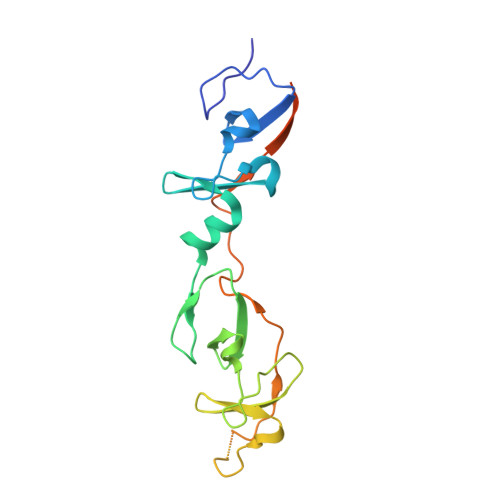Stabilization of a binary protein complex by intein-mediated cyclization
Jeffries, C.M.J., Graham, S.C., Stokes, P.H., Collyer, C.A., Guss, J.M., Matthews, J.M.(2006) Protein Sci 15: 2612-2618
- PubMed: 17001033
- DOI: https://doi.org/10.1110/ps.062377006
- Primary Citation of Related Structures:
2DFY - PubMed Abstract:
The study of protein-protein interactions can be hampered by the instability of one or more of the protein complex components. In this study, we showed that intein-mediated cyclization can be used to engineer an artificial intramolecular cyclic protein complex between two interacting proteins: the largely unstable LIM-only protein 4 (LMO4) and an unstructured domain of LIM domain binding protein 1 (ldb1). The X-ray structure of the cyclic complex is identical to noncyclized versions of the complex. Chemical and thermal denaturation assays using intrinsic tryptophan fluorescence and dynamic light scattering were used to compare the relative stabilities of the cyclized complex, the intermolecular (or free) complex, and two linear versions of the intramolecular complex (in which the interacting domains of LMO4 and ldb1 were fused, via a flexible linker, in either orientation). In terms of resistance to denaturation, the cyclic complex is the most stable variant and the intermolecular complex is the least stable; however, the two linear intramolecular variants show significant differences in stability. These differences appear to be related to the relative contact order (the average distance in sequence between residues that make contacts within a structure) of key binding residues at the interface of the two proteins. Thus, the restriction of the more stable component of a complex may enhance stability to a greater extent than restraining less stable components.
- School of Molecular and Microbial Biosciences, University of Sydney, New South Wales 2006, Australia.
Organizational Affiliation:


















